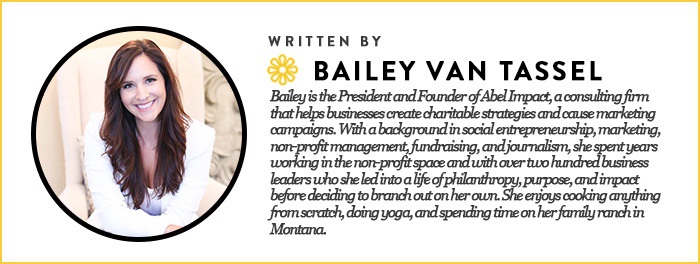 Any endeavor requiring sales can chew you up and spit you out - but being confident and fearless will get you way farther than being timid and wary.
Any endeavor requiring sales can chew you up and spit you out - but being confident and fearless will get you way farther than being timid and wary.
There are six key lessons that I have learned that work in any role where sales, business development, consulting, or fundraising are concerned. And let’s be real, ALL jobs have a sales component – whether you’re trying to get a promotion or trying to raise funds, knowing how to tactfully close that deal is everything.
Some lessons I learned to stay strong as a saleswoman:
Allow a No to be a Not Right Now
Most people will avoid telling you “no” directly. Not only is it uncomfortable, but usually it’s because they may not be confident in why they’re saying no. Instead of pushing for a hard answer, remind them that nothing is urgent and you can follow up when timing may be better. If you’ve set the tone well, you should have a relationship that is beyond a transaction, so let them know you look forward to touching base with them down the road. Then reach out in 6 months.
Set expectations for a follow up
Never leave a conversation without a set expectation for a follow up. That way you always have the ability to reach out. If you are initiating the follow up you can say, “I look forward to being in touch. In fact, I’ll give you a ring on Friday just to be sure you have time to look things over”.
If they say they will follow up, then you can say, “great! If I don’t hear from you by early next week I’ll ping you for a quick chat.”
Setting these expectations makes everything seem less aggressive, and less “salesy”.
Be a consultant, not an order taker
I have actually asked many company CEO’s what makes their team successful, and this is the answer: be a consultant, not an order taker. A consultant knows the business, not just their job. A consultant can give you tips and advice on many things relating to and around what they actually do for you, not just what they are getting paid for. A consultant studies competition and trends, they don’t just clock in and out.
No matter what you’re selling, if you can approach the sale as a friendly and knowledgeable resource as opposed to a ticket seller, you will find yourself becoming indispensable and irresistible.
Ask for referrals
No matter how many stops you’ve pulled out, you will face rejection. And the faster you can get through it, the faster you can find success. In the event someone does pass on your offering have the courage to ask them if there’s anyone in their network that they could introduce you to. To make it extra easy on them, let them know who your ideal introduction would be, and that you can send over your bio in case they want to pass it along via email. Don’t be afraid to do this – this is how business happens, so just embrace it.
Meet them where they are
Being a good sales person means being flexible, patient, and positive. Don’t let people push you off – instead, meet them where they are. I use the acronym ATM. Acknowledge, Transition, and Message. Acknowledge where they are, Transition them back to your focus, and Message in a way that makes sense for them.
 Challenging people’s initial fear and worries is a part of the process, but it’s not an indication of failure – usually you just need people to understand that you get them, and are actually hearing their needs.
Challenging people’s initial fear and worries is a part of the process, but it’s not an indication of failure – usually you just need people to understand that you get them, and are actually hearing their needs.
Plan your next three moves to make your process seamless
A technique that non profit major gift fundraisers use (those are the people who close million dollar deals) is called Moves Management. This system can be supplemented with a good customer relationship management (CRM) program (like Salesforce for example), but has you outline the next three to ten interactions you will have with someone. It’s that intense, but that worthwhile. Now that is grit in action!
Here is what a typical interaction looks like for me:
Move 1: Get an introduction to someone
Move 2: Meet them
Move 3: Follow up email with an action item
Move 4: Action happens, or follow up again
Move 5: Send them a book or article that makes sense – just as a check in
Move 6: Introduce them to someone of value
Move 7: Another check-in meeting
Depending on the type of service, offering, etc. this can go on for a while. Many of my biggest clients take anywhere from six to nine months to close.
Photos by Emilie Anne Szabo


